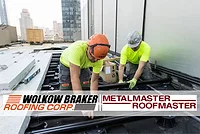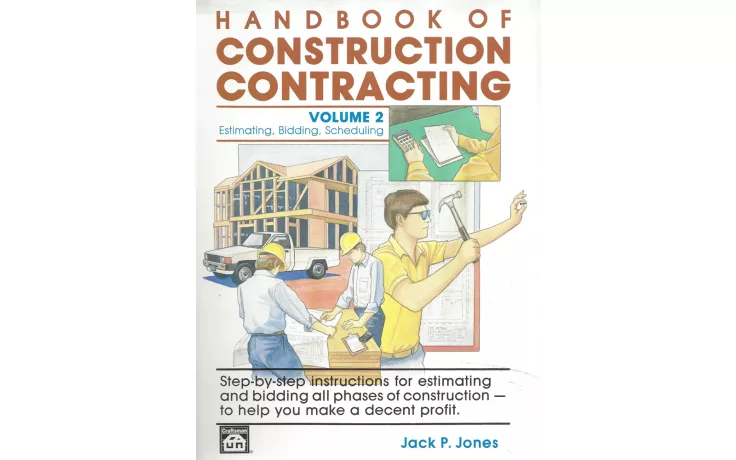Marketing of Metal Takes Shape
Metal roofing is making inroads with residential customers by imitating popular profiles. While standing seam profiles have made significant gains in sloped roofing, there are strong preferences among consumers for roofs that look like wood, slate or tile, but have different attributes.
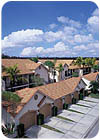
Metal roofing is making inroads with residential customers by imitating popular profiles. While standing seam profiles have made significant gains in sloped roofing, there are strong preferences among consumers for roofs that look like wood, slate or tile, but have different attributes. Price, performance, weight and even availability are factors in the decision-making process as metal roofing companies bend over backward to meet demand.
Metal has a unique advantage in the sloped roofing market in that in can take on any shape. Some metal shingles have evolved to the point where they are twice removed from the original design, imitating dimensional asphalt shingles that imitate wood shakes or slate. The rising profile of premium roofing is turning the heads of homeowners who want more from their roofs and are willing to pay for it.
After researching on the Internet and talking with neighbors, more and more roofing consumers are doing their own math. When their decision involves factors like longevity, performance, appearance, insurance rebates, warranty and resale value, often the overall price is not a key sticking point. In fact, Jim Bush of Atas International believes that roofing contractors don't need to be so defensive about the initial cost, since most metal roofing consumers today have already done that calculation in advance.
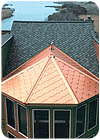 "They come to the contractor to reassure themselves," says Bush, who is vice president of sales at Atas International, a manufacturer of metal roofing panels as well as metal shingles, shakes and tile. "The sales process is just as important as the installation process. Metal roofing still needs to be sold."
"They come to the contractor to reassure themselves," says Bush, who is vice president of sales at Atas International, a manufacturer of metal roofing panels as well as metal shingles, shakes and tile. "The sales process is just as important as the installation process. Metal roofing still needs to be sold."
His company is getting a fair amount of direct inquires from homeowners ready to learn more about something they saw in the neighborhood, read about in a magazine, or saw online. One valuable tool is the Metal Roofing Association's Web site (www.metalroofing.com), which forwards leads to its members. There are also image campaigns, co-op advertising, and builder/home shows designed to enhance the overall market for metal roofing. Bush pursues qualified leads with literature and CDs, but he maintains the key is getting the sales force inside the door to personally go over all the benefits of metal roofing and answer any questions.
Since an effective presentation can take half an hour, he urges contractors to be upfront about the time required to provide objective and realistic information. His company offers numerous profiles, but he's found that limiting the presentation to three choices reduces the confusion that can stall the decision. Regional influences still drive many sales, such as the Advanta shingles, a 12-inch by 36-inch simulated slate shingle that's popular in the Northeast.
Tile profiles sell better in Florida. Options include a standing seam "shingle" that simulates end laps using modular panels. The versatility of metal allows manufacturers to break away from long panels many still associate with an industrial look. With today's metal roofing products, roofing contractors who don't have sheet metal shops are finding they can install a premium material with high profit margins, provided they make a distinction for the consumers unfamiliar with metal.
"They think a metal roof is a metal roof," says Bush, who notes that educating the homeowners means conveying the benefits of metal roofing and delivering on those promises. "We want to make sure that the consumers are getting their expectations out of the product."
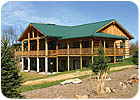
Galvanized 26-gauge steel is stamped into 10-inch by 14-inch shingles that use two nails in the field and interlock on both sides. Although the product has withstood a century of weather, it lacks wind uplift ratings and is locked out of markets like Florida. (There are exemptions for historic renovations.) The venerable product has also been specified for siding, but Cook admits that finding qualified installers can be a problem. Sheet metal shops don't always roof, and roofing contractors don't keep many tin knockers around.
"A lot of roofing companies don't want to touch it if it's metal," he says. However, once this highly visible shingle is installed, the inquiries start rolling in. "You never know what's going to turn up. I think it's an investment in the house. They can get that money back when they sell their home."
David Vansant, general manager for Advanced Roofing in Fort Myers, Fla., has seen a seismic shift in the selection of materials that he attributes primarily to a singular event: Hurricane Charley. When the Category 4 hurricane struck Southwest Florida in August 2004, the amount of roofing that needed to be replaced was immense, and subsequent storms only made matters worse. Lead times to replace some concrete tile roofs stretched to a year, and the market has only recently seen relief. (Four new plants in Florida came on line this year.) Vansant, who has been roofing since he was 12, had installed all kinds of tile and metal in his six years with Advanced, including a stone-coated metal tile by Gerard on the Gasparilla Inn on Gasparilla Island. A vacation spot for VIPs like the Bush clan, the historic main building survived a direct hit from Hurricane Charley.
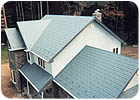 "We were very impressed by that," says Vansant. "It's tough to screw up. You don't have callbacks on this stuff."
"We were very impressed by that," says Vansant. "It's tough to screw up. You don't have callbacks on this stuff."
Much of the damage to tile roofing during the storms appeared to be from projectiles. Often the damage was limited to ridges with no water intrusion, but the availability problems coupled with a heightened concern about wind performance set the stage for a niche product to expand its market. Shortages were also delaying the carefully timed revenue streams for production builders because housing couldn't be occupied without a tile roof. No residents, no money.
"That's initially how we got the first job for WCI," says Vansant about Florida's top developer of master plan communities. "They couldn't get tile to close on their buildings."
When people saw how much Gerard's profile looked like real tile, the conversion at Advanced took place so that two years later, over half of company revenues come from installing that one product. Many older neighborhoods in Florida are seeing exploding property values, and homeowners are making the most of reroofing jobs by upgrading.
Barrel tile is very popular in Florida, and in some cases it's mandatory. There are gated communities which allow only that profile to be installed. In order to get past such deed restrictions, Vansant has to make presentations before homeowners associations or condo boards. A few organizations won't even let him make the case, but those who do get a memorable demonstration. Mike Sheppard, the company's president, usually has volunteers lift off a fastened concrete tile, then asks them to try that with the Gerard product. "Mike Sheppard loves to do that," says Vansant. "He's actually injured himself trying to hammer a Gerard tile. When we do our dog and pony show, they switch."
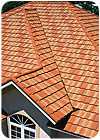
According to Pete Croft, vice president of sales and marketing for Metro Roof Products, areas like the Midwest and parts of Canada are hot spots for flat profiles, one of five stone-coated metal products offered by the company.
"Stone-coated roofs found a niche in residential reroofing," he says. "It's a convergence of a lot of things. We're all just scratching the surface."
Metro Roof began making its product in New Zealand in the late 1980s, opening its first U.S. plant in 2000 in California, one of three now operating there (Gerard and Decra are the other two). The product is not as sensitive to shipping costs as tile, and it can be sent far beyond the usual 500-mile radius that concrete tile plants usually handle.
California represents a mature market, but word is quickly spreading about the wind resistance of stone-coated metal roofs. Metro Roof had projects in Pensacola that survived Hurricane Ivan in 2004. Some roofs were found intact over condemned homes. Homeowners who are used to seeing roofs battered by debris and impaled by two-by-fours know that all roofing materials don't fare equally well in a hurricane. The shared tragedy of a direct hurricane strike makes a lasting impression on those who rebuild and await the next event. In the storm's aftermath, the products that withstood nature's wrath get noticed.
"It's the best sort of billboard you could ever hope for," says Croft about a roof that performs well in a storm for homeowners. "They sort of get the religion and start preaching to others."

Photo courtesy of Metro Roof Products.
Metal roofing is making inroads with residential customers by imitating popular profiles. While standing seam profiles have made significant gains in sloped roofing, there are strong preferences among consumers for roofs that look like wood, slate or tile, but have different attributes. Price, performance, weight and even availability are factors in the decision-making process as metal roofing companies bend over backward to meet demand.
Metal has a unique advantage in the sloped roofing market in that in can take on any shape. Some metal shingles have evolved to the point where they are twice removed from the original design, imitating dimensional asphalt shingles that imitate wood shakes or slate. The rising profile of premium roofing is turning the heads of homeowners who want more from their roofs and are willing to pay for it.
After researching on the Internet and talking with neighbors, more and more roofing consumers are doing their own math. When their decision involves factors like longevity, performance, appearance, insurance rebates, warranty and resale value, often the overall price is not a key sticking point. In fact, Jim Bush of Atas International believes that roofing contractors don't need to be so defensive about the initial cost, since most metal roofing consumers today have already done that calculation in advance.

Homeowners are seeing more metal roofs in magazines, on the Internet and in their neighborhoods, and contractors are seeing increased inquiries into residential metal applications. (Photo courtesy of Atas International.)
His company is getting a fair amount of direct inquires from homeowners ready to learn more about something they saw in the neighborhood, read about in a magazine, or saw online. One valuable tool is the Metal Roofing Association's Web site (www.metalroofing.com), which forwards leads to its members. There are also image campaigns, co-op advertising, and builder/home shows designed to enhance the overall market for metal roofing. Bush pursues qualified leads with literature and CDs, but he maintains the key is getting the sales force inside the door to personally go over all the benefits of metal roofing and answer any questions.
Since an effective presentation can take half an hour, he urges contractors to be upfront about the time required to provide objective and realistic information. His company offers numerous profiles, but he's found that limiting the presentation to three choices reduces the confusion that can stall the decision. Regional influences still drive many sales, such as the Advanta shingles, a 12-inch by 36-inch simulated slate shingle that's popular in the Northeast.
Tile profiles sell better in Florida. Options include a standing seam "shingle" that simulates end laps using modular panels. The versatility of metal allows manufacturers to break away from long panels many still associate with an industrial look. With today's metal roofing products, roofing contractors who don't have sheet metal shops are finding they can install a premium material with high profit margins, provided they make a distinction for the consumers unfamiliar with metal.
"They think a metal roof is a metal roof," says Bush, who notes that educating the homeowners means conveying the benefits of metal roofing and delivering on those promises. "We want to make sure that the consumers are getting their expectations out of the product."

Metal roofing continues to make inroads with homeowners by offering new takes on some popular profiles of other roofing materials. (Photo courtesy of Atas International.)
Crossover Appeal
Certain profiles of metal roofing shingles don't imitate anything, like the stamped metal squares that were popular in the 1800s through the 1920s. Conklin Metal Industries in Atlanta has been making the same diamond pattern since 1874, and it has seen a resurgence lately. The Thompson family took over in the early 1900s and has been selling that single profile ever since. "The market's been very good," says Joel Cook, sales representative for Conklin. "A lot of renovations are going on in the Southeast. People are beginning to understand the long-term benefits of metal roofing."Galvanized 26-gauge steel is stamped into 10-inch by 14-inch shingles that use two nails in the field and interlock on both sides. Although the product has withstood a century of weather, it lacks wind uplift ratings and is locked out of markets like Florida. (There are exemptions for historic renovations.) The venerable product has also been specified for siding, but Cook admits that finding qualified installers can be a problem. Sheet metal shops don't always roof, and roofing contractors don't keep many tin knockers around.
"A lot of roofing companies don't want to touch it if it's metal," he says. However, once this highly visible shingle is installed, the inquiries start rolling in. "You never know what's going to turn up. I think it's an investment in the house. They can get that money back when they sell their home."
David Vansant, general manager for Advanced Roofing in Fort Myers, Fla., has seen a seismic shift in the selection of materials that he attributes primarily to a singular event: Hurricane Charley. When the Category 4 hurricane struck Southwest Florida in August 2004, the amount of roofing that needed to be replaced was immense, and subsequent storms only made matters worse. Lead times to replace some concrete tile roofs stretched to a year, and the market has only recently seen relief. (Four new plants in Florida came on line this year.) Vansant, who has been roofing since he was 12, had installed all kinds of tile and metal in his six years with Advanced, including a stone-coated metal tile by Gerard on the Gasparilla Inn on Gasparilla Island. A vacation spot for VIPs like the Bush clan, the historic main building survived a direct hit from Hurricane Charley.

Regional influences still drive metal sales. Atas has found its Advanta shingles are popular in the Northeast. (Photo courtesy of Atas International.)
Much of the damage to tile roofing during the storms appeared to be from projectiles. Often the damage was limited to ridges with no water intrusion, but the availability problems coupled with a heightened concern about wind performance set the stage for a niche product to expand its market. Shortages were also delaying the carefully timed revenue streams for production builders because housing couldn't be occupied without a tile roof. No residents, no money.
"That's initially how we got the first job for WCI," says Vansant about Florida's top developer of master plan communities. "They couldn't get tile to close on their buildings."
When people saw how much Gerard's profile looked like real tile, the conversion at Advanced took place so that two years later, over half of company revenues come from installing that one product. Many older neighborhoods in Florida are seeing exploding property values, and homeowners are making the most of reroofing jobs by upgrading.
Barrel tile is very popular in Florida, and in some cases it's mandatory. There are gated communities which allow only that profile to be installed. In order to get past such deed restrictions, Vansant has to make presentations before homeowners associations or condo boards. A few organizations won't even let him make the case, but those who do get a memorable demonstration. Mike Sheppard, the company's president, usually has volunteers lift off a fastened concrete tile, then asks them to try that with the Gerard product. "Mike Sheppard loves to do that," says Vansant. "He's actually injured himself trying to hammer a Gerard tile. When we do our dog and pony show, they switch."

Metro Roof Products initially developed its new stone-coated steel roof panel, the MetroTile-Roman, for the European market, but decided to make it available in Florida and California. (Photo courtesy of Metro Roof Products.)
Good Conditions for Growth
Weather influences the market for stone coated metal roofing in other areas of the country. Stone-coated metal tile mimicking shakes and shingles has found a growing market in the Southwest. Hail is a strong influence in tornado alley, and in states such as Texas, Oklahoma and Kansas, the unique properties of stone-coated tiles or shakes give them the ability to withstand hailstorms without sustaining cosmetic damage.According to Pete Croft, vice president of sales and marketing for Metro Roof Products, areas like the Midwest and parts of Canada are hot spots for flat profiles, one of five stone-coated metal products offered by the company.
"Stone-coated roofs found a niche in residential reroofing," he says. "It's a convergence of a lot of things. We're all just scratching the surface."
Metro Roof began making its product in New Zealand in the late 1980s, opening its first U.S. plant in 2000 in California, one of three now operating there (Gerard and Decra are the other two). The product is not as sensitive to shipping costs as tile, and it can be sent far beyond the usual 500-mile radius that concrete tile plants usually handle.
California represents a mature market, but word is quickly spreading about the wind resistance of stone-coated metal roofs. Metro Roof had projects in Pensacola that survived Hurricane Ivan in 2004. Some roofs were found intact over condemned homes. Homeowners who are used to seeing roofs battered by debris and impaled by two-by-fours know that all roofing materials don't fare equally well in a hurricane. The shared tragedy of a direct hurricane strike makes a lasting impression on those who rebuild and await the next event. In the storm's aftermath, the products that withstood nature's wrath get noticed.
"It's the best sort of billboard you could ever hope for," says Croft about a roof that performs well in a storm for homeowners. "They sort of get the religion and start preaching to others."
Links
Looking for a reprint of this article?
From high-res PDFs to custom plaques, order your copy today!




